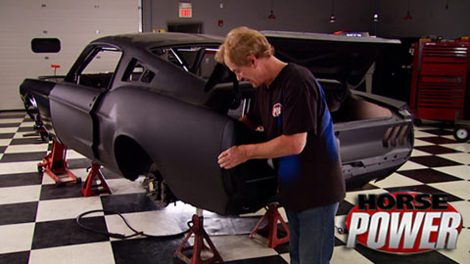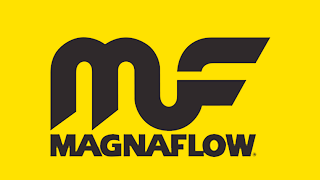HorsePower Builds
Want more content like this?
Join the PowerNation Email NewsletterParts Used In This Episode
American Powertrain Systems
ProFit™ TKO-600 .64 Kit, TKO600.64 with Custom Streamlined Main Case, ProGrip™ Billet steel flywheel, Crossmember and mount kit, Cryo hardened slip yoke, Race Grade-8 Flywheel and Pressure Plate Bolts, Hurst shifter with AP Mustang Console Stub, ProGrip™ Full Circle Kevlar disc, ProGrip™ Low-Flex Formed Pressure Plate, Hydramax™ Hydraulic clutch kit, QuickTime Inc. Performance Products SFI Scattershield and Motor Plate.
Flaming River
Laser Cut Collapsible Tilt Column, column mount, Borgeson u-joints and DD shaft.
Global West Suspension
Subframe connectors are a important upgrade for your pony car. Subframes add additional support to the chassis by reducing flex. This increases load transfer from front to rear or corner to corner depending on your application. They also improve the integrity of the the uni-body., Jacking rails go to the outer rocker rails and weld on the inside edge.This kit also provides an avenue for connecting the roll cage to the entire assembly.
Jaz Products
16 Gallon Pro Sport Circle Track Fuel Cell with aviation safety foam and D-ring cap.
Milodon
Front sump design for use in road race applications in stock pre-74 chassis and all Cobras . Features multiple baffles to provide oil supply during violent turns, acceleration and deceleration. Fits most stock chassis using front sump pan. Features multiple baffles and trap doors to provide oil supply during violent turns, acceleration and high speed deceleration. Has a 1/2" pipe oil temperature sender bung.Pan Capacity is 7 Quarts Plus Filter - 7 1/2" Sump Depth.
Autopower Industries,Inc.
Bolt-In Roll Cages are SCCA & NASA legal for club racing.
Mandrel Bending Solutions
Mandrel Bent Straight and Angled 3.5" Oval exhaust tubing and transition tubing from oval to round.
O'Reilly Auto Parts
Fittings
O'Reilly Auto Parts
Dual feed line for AVS carb
O'Reilly Auto Parts
Case of brake cleaner
O'Reilly Auto Parts
Plastigage .001-.003 Green (6)
O'Reilly Auto Parts
Roloc Disc (25)
O'Reilly Auto Parts
Roloc Disc (25)
O'Reilly Auto Parts
Heli-coil kit
Rocket Performance Machine, Inc.
18x8, 5x4 1/2 bolt pattern, 4.75" backspacing, Rocket Booster Gray Center-Machined Outer 1 pc wheel.
Wilwood Engineering
Forward Swing Mount Triple Master Cylinder Pedal Assembly, Compact Remote Combination Master Cylinders.
YearOne
Bumper Inner Arms and outer arms, Rear bumper brackets, Front and rear bumpers, front lower valance, tail lamp housings, Front grille, bumper bolts, hood latch, front fenders, hood hinges, headlamp assemblies, grille moldings and window moldings, standard hood, hood catch and grille support, quarter panel extensions.
YearOne
Taillight bezel kit, front lower spoiler, quarter vent assemblies, stone deflector, body fastener kits,taillight lenses.






























